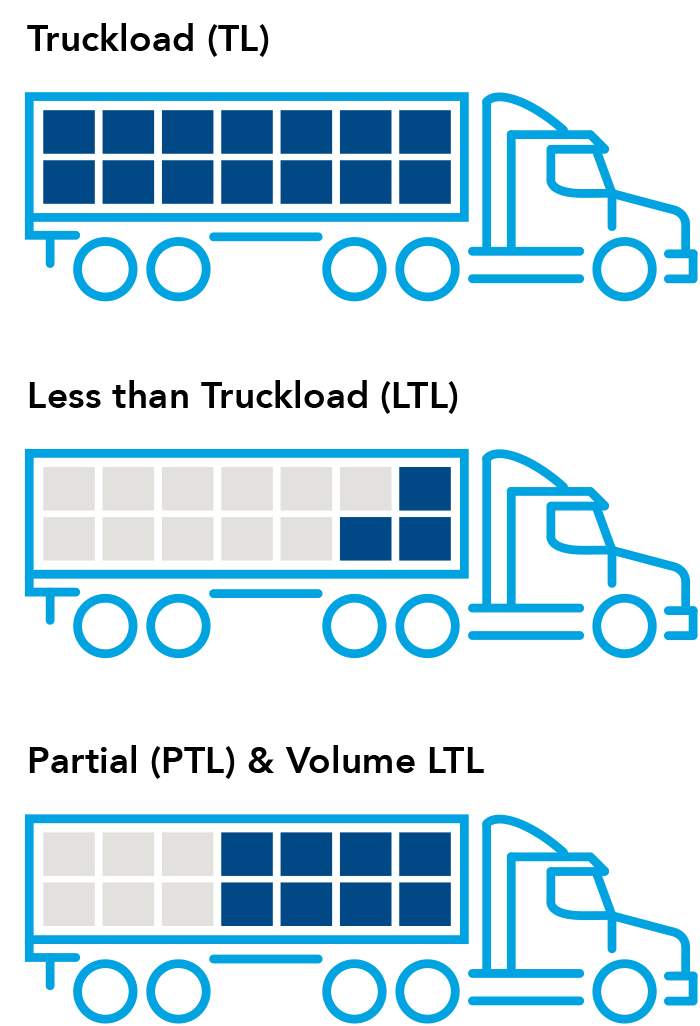When partial truckload is the best shipping solution
If your shipment is over 5,000 pounds or consists of 6+ pallets, partial truckload (PTL) shipping services may be a cost-effective option for you. Similar to LTL, when you ship a partial truckload, you’re splitting the cost of a truck with other shippers, resulting in a more economical solution. Outside of potential cost savings, there are other reasons partial truckload shipping may be in your best interest.
Partial truckload defined
Partial truckload (PTL) is a freight mode for medium-large size shipments that may not require the use of a full truckload trailer. Partial truckload falls between LTL and full truckload, typically involving shipments over 5,000 pounds or 6 or more pallets. PTL shipments do not require freight class in order to secure a rate, involve less handling, and typically result in faster transit times.
Here are some scenarios where partial truckload can be an ideal shipping option:
- 1. Medium-sized shipments: If your shipment is too large for LTL carriers but doesn't require a full truckload, partial truckload is an economical choice.
- 2. Time-sensitive deliveries: Partial truckload shipping reduces transit time because it involves fewer to no stops—making it faster than LTL delivery.
- 3. Protecting fragile or high-value goods: With fewer stops comes less freight handling and fewer touchpoints than LTL. The risk of damage or loss is reduced, providing better protection for your cargo.
- 4. Flexible capacity: PTL offers flexibility in terms of capacity. You can book the space you need without committing to a full truckload. This is particularly useful if your shipment volume fluctuates, or if the origin or destination is in an extremely remote area where LTL isn't an option.
Our freight experts will work with you to present the best shipping option that fits your budget, transit time, and handling needs.
Partial truckload infographic

Benefits of partial truckload shipping with Freightquote®
- Fast transit times
- Limited handling of your freight
- Compare partial truckload rates with LTL and truckload
- No freight class required
Partial truckload shipping FAQ
As one of the less common shipping methods, chances are you have some questions regarding partial truckload shipping. Here are some of the most common questions we receive regarding PTL shipping:
How is partial truckload different from LTL?
Partial truckload and LTL are similar in that both involve sharing a trailer with other freight loads. The primary difference is that partial truckloads are based exclusively on the weight and size of your shipment instead of the freight class or density.
When should you choose partial over LTL?
If your shipment is over 5,000 pounds or 6 pallets, partial truckload shipping may be a more cost-effective option. Additionally, LTL is based on freight class, which can drive up costs on shipments that take up a significant amount of space but are low density.
Do I need to know exact dimensions of my partial truckload shipment?
Yes, provide your PTL carrier with accurate and detailed information about your shipment, including dimensions, weight, special handling requirements, and delivery deadlines. Early communication allows the carrier to plan and allocate the appropriate resources.
No freight scale? No problem! Get creative ways to help you calculate your freight weight.
Is partial truckload faster than LTL?
Yes, typically. With partial truckload, cargo stays in one trailer, there are fewer stops at freight terminals, and there is no LTL cross-docking, resulting in faster transit times. If speed is your top priority, you could also consider expedited shipping services.

